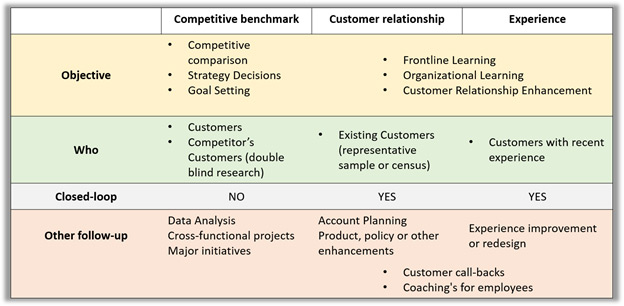Net Promoter 
Net Promoter or Net Promoter Score (NPS) is a tool used to compute the
loyalty of a firm's customers and business relationships. This score can be
used to know how customers feel about the firm or to check the business
relationships of the firm with its distributors or retailers. It serves as
a replacement to traditional customer satisfaction research and can be
correlated with the revenue numbers of an organization. NPS is widely
accepted by almost all business units across industries such as FMCG,
consumer goods, electronics, etc., in India.
NPS is majorly relevant to the companies which want to track promoters and
detractors of their brands. The analysis gives a complete outline of the
organization performance through its customers’ eyes. Although the concept
is trademarked by Bain & Company and initially designed for the western
countries’ requirements, the analysis shows the sustained value creators –
through which companies can achieve long-term growth. TechSci has modified
the concept to make it relevant for Indian brands.
How Scoring Works?
TechSci scores responses to the question related to multiple services on a
simple 0-10 scale. This scale is easy for customers to understand. Also,
the responses tend to cluster in following three groups, each one
characterized by different attitudes, behaviors and, therefore, economic
value.
 Promoters (9 or 10)
Promoters (9 or 10)
Promoters are either loyal to the product and have been using the product
for a significant time or new users completely satisfied with the services.
In any form, they are more likely as compared to others to remain customers
and to increase their purchases over time. The Promoters drive the business
by Word of Mouth. Thus, they account for over 80% of referrals in most
businesses.
 Passives (7 or 8)
Passives (7 or 8)
The passives are ONLY ‘satisfied’ with the product. They are likely to
switch and are not very enthusiastic to promote the brands which lead to
low rebuying and referral rates i.e. 50% lesser than those promoters.
Technically, this category is ignored while calculating NPS, but TechSci
performs a separate analysis to list down possible research efforts to make
them a rather happy customer.
 Detractors (0 to 6)
Detractors (0 to 6)
Detractors are completely unhappy customers and hence account for over 80%
of negative word-of-mouth. The companies are advised to keep this
percentage low, especially for impulse products. They have high rates of
churn and defection. With the introduction of social media, the existence
of discouraged customers can be precarious.

Methodology
The NPS is calculated by asking 4-5 subjective questions pertaining to the
objective of the organization. For example: Service quality of an
automotive car company or happiness index of employees.
Step 1
: The most important part of the study is to diagnose the problem and list
down all the parameters important for the function. Let’s pick the same
example of Service Quality mapping. In this case, important parameters are
time of service, cost of the service, interaction with the employees and
communication for service related queries.
Step 2:
Create a 4-5 objective question questionnaire (max 1 subjective question).
The questionnaire can be created by asking the customers how happy or
satisfied they are with the service and make them scale the answer. The
process will let a customer think about the service he has consumed and can
take a rational decision for likelihood.
The duration of the questionnaire should not be more than 30 seconds.
Beyond this time, the customer usually becomes impatient and gives random
responses which further increase the variation level.
Step 3:
Identifying the users – The Users can be identified on the basis of the
target group an organization would like to choose.
- Client usually shares the data of all the possible users
- Agency creates its own user database (in case of an FMCG or consumer
durable product)
Post data collection for all responses, the results are compiled to arrive
at the brand’s NPS score. This score is calculated by subtracting the
percentage of Detractors from the percentage of Promoters.
|
NPS
|
=
|
% promoters
|
-
|
% Detractors
|
A single number that can range from -100 (for all Detractors) to +100 (for
all Promoters) will be shown on the screen, which is the final NPS for the
brand. This numerical score gives the client a benchmark that provides a
macro picture of how they are doing. Over time, it corrects the business
course of action.
 To make it relevant to an Indian context. In few cases where % age passives
are more than % age detractors, an average score of NPS is calculated and
compared with the respective top brand.
To make it relevant to an Indian context. In few cases where % age passives
are more than % age detractors, an average score of NPS is calculated and
compared with the respective top brand.